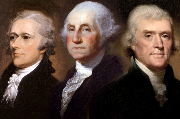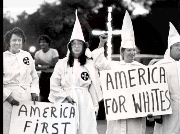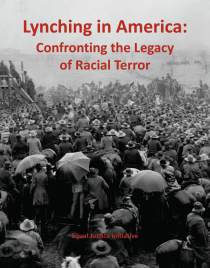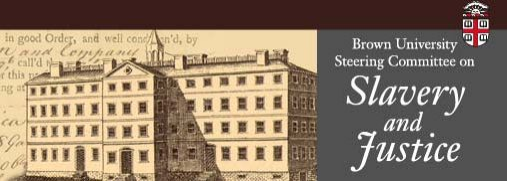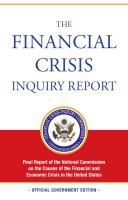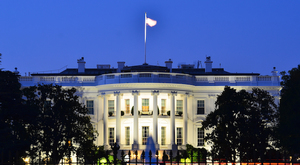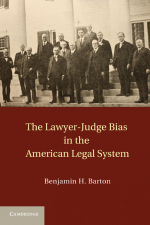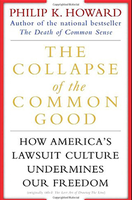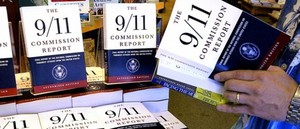Racism Today in the United States of America
Racism in the United States
Wikipedia
Racism and ethnic discrimination in the United States has been a major issue since the colonial era and the slave era. Legally or socially sanctioned privileges and rights were given to White Americans that were not granted to Native Americans, African Americans, Asian Americans, and Latin Americans. European Americans (particularly WASPs) were granted exclusive privileges in matters of education, immigration, voting rights, citizenship, land acquisition, and criminal procedure over periods of time extending from the 17th century to the 1960s. However, non-Protestant immigrants from Europe; particularly Irish people, Poles, and Italians, suffered xenophobic exclusion and other forms of ethnicity-based discrimination in American society, and were not considered fully white. In addition, West Asian groups like Jews and Arabs have faced continuous discrimination in the United States, and as a result, some people belonging to these groups do not identify as white. East and South Asians have similarly faced racism in America. Read more
We Charge Genocide: 1.5 Million Black Men "Missing" Black Agenda
Report
by Glen Ford 04/22/2015
Where did all the Black men go? Analysis of population data shows so many Black males have gone to prison, died of disease of accidents, or by violence, that Black females in many communities outnumber Black men by ratios of 6 to 10. A national policy of mass Black incarceration is the primary factor – Read more
The Federal Bureau of Prisons, a division of the United States Department of Justice, is responsible for the administration of United States federal prisons.
- Incarceration in the United States, Wikipedia
- Correctional Populations in the United States, 2010
- Human rights in the United States, Prison System
- United States incarceration rate, Wikipedia
- List of U.S. states by incarceration rate
- Bureau of Justice Statistics
Creation Myth, White Supremacy
SOA Watch, by Elizabeth Martinez
Every nation has a creation myth, or origin myth, which is the story people are taught of how the nation came into being. Ours says the United States began with Columbus's so-called "discovery" of
America, continued with settlement by brave Pilgrims, won its independence from England with the American Revolution, and then expanded westward until it became the enormous, rich country you see
today.
That is the origin myth. It omits three key facts about the birth and growth of the United States as a nation. Those facts demonstrate that White Supremacy is fundamental to the existence of this country.
A. The United States is a nation state created by military conquest in several stages. The first stage was the European seizure of the lands inhabited by indigenous peoples, which they called Turtle Island. Before the European invasion, there were between nine and eighteen million indigenous people in North America. By the end of the Indian Wars, there were about 250,000 in what is now called the United States, and about 123,000 in what is now Canada (source of these population figures from the book _The State of Native America_ ed. by M. Annette Jaimes, South End Press, 1992). That process must be called genocide, and it created the land base of this country. The elimination of indigenous peoples and seizure of their land was the first condition for its existence.
B. The United States could not have developed economically as a nation without enslaved African labor. When agriculture and industry began to grow in the colonial period, a tremendous labor shortage existed. Not enough white workers came from Europe and the European invaders could not put indigenous peoples to work in sufficient numbers. It was enslaved Africans who provided the labor force that made the growth of the United States possible.
That growth peaked from about 1800 to 1860, the period called the Market Revolution. During this period, the United States changed from being an agricultural/commercial economy to an industrial corporate economy. The development of banks, expansion of the credit system, protective tariffs, and new transportation systems all helped make this possible. But the key to the Market Revolution was the export of cotton, and this was made possible by slave labor.
C. The third major piece in the true story of the formation of the United States as a nation was the take-over of half of Mexico by war -- today's Southwest. This enabled the U.S. to expand to the Pacific, and thus open up huge trade with Asia -- markets for export, goods to import and sell in the U.S. It also opened to the U.S. vast mineral wealth in Arizona, agricultural wealth in California, and vast new sources of cheap labor to build railroads and develop the economy.
The United States had already taken over the part of Mexico we call Texas in 1836, then made it a state in 1845. The following year, it invaded Mexico and seized its territory under the 1848 Treaty of Guadalupe Hidalgo. A few years later, in 1853, the U.S. acquired a final chunk of Arizona from Mexico by threatening to renew the war. This completed the territorial boundaries of what is now the United States.
Those were the three foundation stones of the United States as a nation. One more key step was taken in 1898, with the takeover of the Philippines, Puerto Rico, Guam and Cuba by means of the Spanish-American War. Since then, all but Cuba have remained U.S. colonies or neo-colonies, providing new sources of wealth and military power for the United States. The 1898 take-over completed the phase of direct conquest and colonization, which had begun with the murderous theft of Native American lands five centuries before.
Many people in the United States hate to recognize these truths. They prefer the established origin myth. They could be called the Premise Keepers. Read more
White supremacy
Wikipedia
White supremacy or white supremacism is a racist ideology centered upon the belief, and promotion of the belief, that white people are superior in certain characteristics, traits, and attributes to people of other racial backgrounds and that therefore white people should politically, economically and socially rule non-white people.
The term is also typically used to describe a political ideology that perpetuates and maintains the social, political, historical and/or industrial domination by white people (as evidenced by historical and contemporary sociopolitical structures such as the Atlantic slave trade, Jim Crow laws in the United States, and apartheid in South Africa).[1] Different forms of white supremacism put forth different conceptions of who is considered white, and different white supremacists identify various racial and cultural groups as their primary enemy.[2] White supremacist groups have typically opposed people of color, immigrants, Jews, and Catholics.[3]
In academic usage, particularly in usage drawing on critical race theory, the term "white supremacy" can also refer to a political or socio-economic system where white people enjoy a structural advantage (privilege) over other ethnic groups, both at a collective and an individual level. Read more
Modern display of the Confederate flag
Wikipedia
The display of flags used by and associated with the Confederate States of America (1861–1865) has continued into the present day, with the "Southern cross" used in the battle flag of General Robert E. Lee's Army of Northern Virginia gaining the most popular recognition as a modern symbol of the Confederacy, and by extension, the Southern United States in general. Such displays have been made for a variety of reasons, with Southern culture, states' rights, and historical commemoration among the stated reasons for particular uses. Displaying the flag has long been controversial, due to the flag's historical associations with racism, slavery, segregation, and white supremacy.[1][2][3] Read more
Study Finds Blacks Blocked From Southern Juries
New York Times
By SHAILA DEWAN
June 1, 2010
In late April in a courthouse in Madison County, Ala., a prosecutor was asked to explain why he had struck 11 of 14 black potential jurors in a capital murder case. The district attorney, Robert Broussard, said one had seemed "arrogant" and "pretty vocal." In another woman, he said he "detected hostility." more
White privilege
Wikipedia
White privilege (or white skin privilege) is a term for societal privileges that benefit people identified as white in Western countries, beyond what is commonly experienced by non-white people under the same social, political, or economic circumstances. Academic perspectives such as critical race theory and whiteness studies use the concept of "white privilege" to analyze how racism and racialized societies affect the lives of white or white-skinned people.
According to Peggy McIntosh, whites in Western societies enjoy advantages that non-whites do not experience, as "an invisible package of unearned assets".[1] White privilege denotes both obvious and less obvious passive advantages that white people may not recognize they have, which distinguishes it from overt bias or prejudice. These include cultural affirmations of one's own worth; presumed greater social status; and freedom to move, buy, work, play, and speak freely. The effects can be seen in professional, educational, and personal contexts. The concept of white privilege also implies the right to assume the universality of one's own experiences, marking others as different or exceptional while perceiving oneself as normal.[2][3] Read more
National Black Farmers Association
Senate Majority Leader Harry Reid criticized Republicans for blocking a measure that would compensate black farmers engaged in a decades-old discrimination suit against the U.S. Agriculture Department.
Black Past.org Blog, Jan-27-2015
- Urban Farming.....who knew! Black Past.org, July 23, 2012
- Inside the White House: The Kitchen Garden



